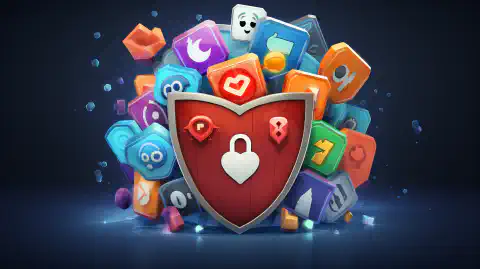Navigating Internet Hoaxes: Understanding, Psychology, and Safeguarding Online Integrity

Table of Contents
Which of the Following is True of Internet Hoaxes?
Internet hoaxes have become an increasingly common occurrence in today’s digital age. With the rise of social media and the ease of spreading information online, it has become crucial to understand the true nature of internet hoaxes. In this article, we will explore various aspects of internet hoaxes, including their definition, types, psychology, history, notable examples, identification and debunking techniques, and the role of social media in their spread. By the end of this article, you will have a comprehensive understanding of internet hoaxes and be better equipped to navigate the online landscape.## Understanding Internet Hoaxes
Definition and Types of Internet Hoaxes
An internet hoax can be defined as a deliberate attempt to deceive or trick internet users through the dissemination of false information. These hoaxes can take on various forms, including fabricated news stories, viral social media posts, phishing scams, and chain messages. The intention behind these hoaxes can range from seeking attention to promoting a specific agenda or even causing harm.
One common type of internet hoax is the “fake news” phenomenon, where false information is presented as genuine news. These hoaxes often exploit people’s biases, fears, or desires and can have significant real-world consequences. For example, in 2016, a fake news story claiming that a Washington, D.C. pizza restaurant was involved in a child trafficking ring led to a man opening fire inside the establishment. This incident highlights the dangerous consequences that can arise from the spread of false information.
Another type of internet hoax is the “celebrity death hoax,” where rumors of a celebrity’s demise spread rapidly on social media, causing panic and confusion. These hoaxes often start with a fake news article or a manipulated image, which is then shared and amplified by unsuspecting users. In some cases, the hoax can even affect the celebrity’s personal life, as they may receive numerous messages of condolences and inquiries about their well-being.
The Psychology Behind Internet Hoaxes
Understanding the psychology behind internet hoaxes is essential to grasp why people fall for them and why they are so prevalent. The allure of sensational or shocking information, combined with the speed and anonymity of online communication, makes it easier for hoaxes to thrive. People are naturally drawn to content that evokes strong emotions, and hoaxes often play on these emotions to capture attention and generate engagement.
Moreover, cognitive biases, such as confirmation bias and the illusion of truth effect, play a role in reinforcing people’s beliefs and making them susceptible to hoaxes. Confirmation bias refers to the tendency to seek out information that confirms one’s preexisting beliefs and ignore or dismiss information that contradicts them. This bias can make individuals more likely to believe and share hoaxes that align with their existing worldview.
The illusion of truth effect, on the other hand, refers to the phenomenon where repeated exposure to information increases its perceived truthfulness. When people encounter a hoax multiple times, either through repeated sharing or seeing it in different contexts, they may start to accept it as true without critically evaluating its validity. This effect is particularly potent in the age of social media, where information can quickly go viral and reach a wide audience.
Additionally, the viral nature of hoaxes on social media can lead to a herd mentality, where individuals share or believe in hoaxes simply because others are doing so. This phenomenon is known as social proof, where people look to others to determine the correct course of action or belief. When a hoax gains traction and receives widespread attention, it can create a sense of legitimacy and credibility, further perpetuating the spread of false information and the success of internet hoaxes.
The History of Internet Hoaxes
The history of internet hoaxes is a fascinating journey that dates back to the early days of the internet. These digital deceptions have evolved over time, leaving a trail of panic, misinformation, and financial loss in their wake.
Early Internet Hoaxes and Their Impact
One notable example of an early internet hoax is the infamous “Good Times” virus. This hoax originated in the early 1990s and spread like wildfire through email. Users would receive a warning about a destructive virus disguised as an email with the subject line “Good Times.” The message instilled fear and panic, causing unnecessary concern and the rapid spread of misinformation. People were left questioning the safety of their digital interactions and the credibility of their online communications.
Another early internet hoax that captured significant attention was the notorious “Nigerian Prince” scam. This clever ploy preyed on people’s greed and trust, promising a large sum of money in exchange for assistance. Victims would receive an email from someone claiming to be a Nigerian prince, seeking help to transfer vast fortunes out of the country. Unfortunately, many unsuspecting individuals fell for the scam, resulting in financial loss and shattered dreams. The Nigerian Prince hoax exposed the vulnerabilities of online interactions and highlighted the importance of skepticism in the digital realm.
Evolution of Internet Hoaxes Over Time
As technology advanced, so did the methods and reach of internet hoaxes. With the advent of social media platforms, hoaxes found a fertile ground to spread rapidly and reach a larger audience. The power of sharing and the allure of sensationalism made social media the perfect breeding ground for these deceptive schemes.
Clickbait headlines became a popular tool for spreading hoaxes. These attention-grabbing titles enticed users to click on links that led to false information or malicious content. People fell victim to the allure of sensational stories, unaware that they were being deceived. Manipulated images also played a significant role in perpetuating internet hoaxes. Photoshopped pictures, altered to look authentic, were shared widely, leading to confusion and the perpetuation of falsehoods.
In recent years, viral challenges have become a prominent vehicle for internet hoaxes. These challenges, often involving dangerous or bizarre activities, spread like wildfire across social media platforms. The allure of social acceptance and the desire to be part of a trending phenomenon made individuals susceptible to these hoaxes. One such example is the “Momo challenge,” which gained widespread media attention in 2018. The hoax involved a creepy-looking character named Momo, who allegedly encouraged self-harm and dangerous activities among children. Despite being debunked as a hoax, the Momo challenge caused widespread panic among parents and educators, highlighting the power of internet hoaxes to manipulate emotions and create fear.
The history of internet hoaxes is a testament to the ever-evolving nature of deception in the digital age. As technology continues to advance, so too will the methods used by those seeking to deceive and manipulate. It is crucial for internet users to remain vigilant, critically evaluate information, and verify the authenticity of online content to avoid falling victim to these deceptive schemes.
Notable Internet Hoaxes and Their Consequences
Case Studies of Famous Internet Hoaxes
Examining case studies of famous internet hoaxes can shed light on their impact and consequences. One such example is the “War of the Worlds” radio broadcast in 1938, where Orson Welles presented a fictional alien invasion as a live news report.
The broadcast, which aired on October 30, 1938, caused widespread panic among listeners who believed the events were real. People tuned in to their radios and heard reports of Martians landing in New Jersey and wreaking havoc in cities across the United States. The power of media to elicit emotional responses and spread misinformation was on full display during this event.
Listeners who had missed the introduction to the program, which indicated that it was a work of fiction, were convinced that the world was under attack. Some people fled their homes, others armed themselves, and chaos ensued. The panic eventually subsided when it became clear that the broadcast was a dramatization, but it left a lasting impact on the public’s perception of the media’s influence and responsibility.
Another well-known internet hoax is the “Crop Circles” phenomenon, where intricate patterns appeared in fields, sparking speculation about extraterrestrial activities.
These mysterious formations, often found in crops like wheat or corn, captured the imagination of people around the world. The intricate designs and precision of the patterns led many to believe that they were the result of alien visitations or secret government experiments.
However, scientific investigations have consistently debunked these claims, providing evidence that crop circles are human-made art. People have admitted to creating these intricate patterns using simple tools and techniques. Despite the scientific explanation, the myth of crop circles persisted, fueled by conspiracy theories and sensational media coverage.
The Real-World Effects of Internet Hoaxes
The consequences of internet hoaxes can extend beyond mere misinformation. Hoaxes have the potential to harm individuals, damage reputations, or incite fear and panic.
There have been cases where false information spread through social media has led to defamatory accusations or public unrest. In 2013, for example, a false rumor spread on Twitter that an innocent man was responsible for the Boston Marathon bombing. The man’s name was wrongly associated with the attack, leading to harassment and threats against him and his family.
In extreme cases, hoaxes have even resulted in loss of life. The “Pizzagate” conspiracy theory, which claimed that a Washington, D.C. pizzeria was involved in a child sex trafficking ring, led a man to enter the restaurant with a firearm, firing shots inside. Fortunately, no one was injured, but the incident highlighted the potential dangers of spreading false information online.
These examples demonstrate the need for critical thinking and media literacy in the digital age. It is crucial for individuals to verify information before sharing it, to question the sources and motives behind viral stories, and to consider the potential consequences of spreading misinformation.
As technology continues to evolve, so do the methods and impact of internet hoaxes. It is important for individuals to stay vigilant and informed, to prevent the spread of false information and minimize the potential harm caused by these hoaxes.






